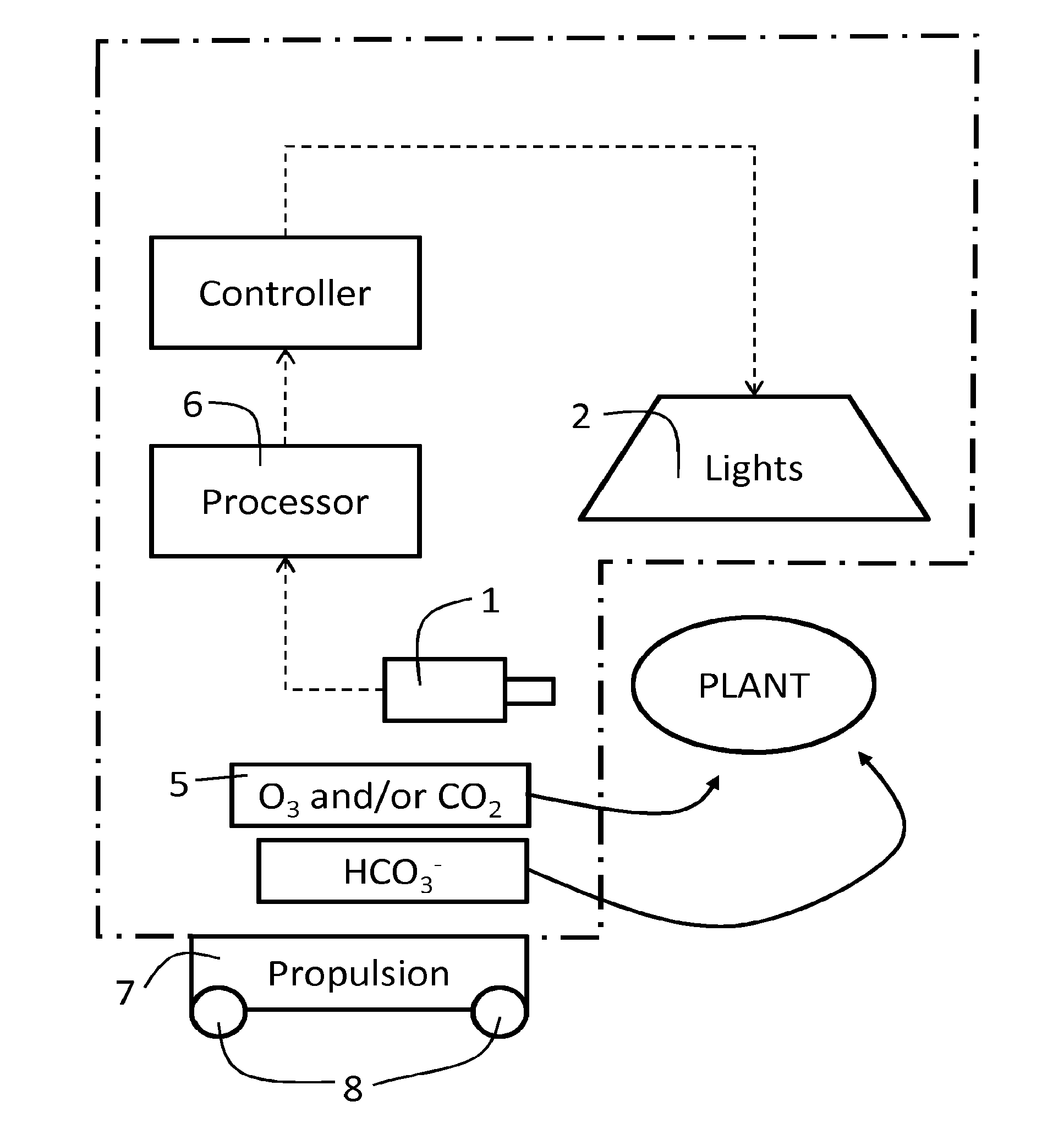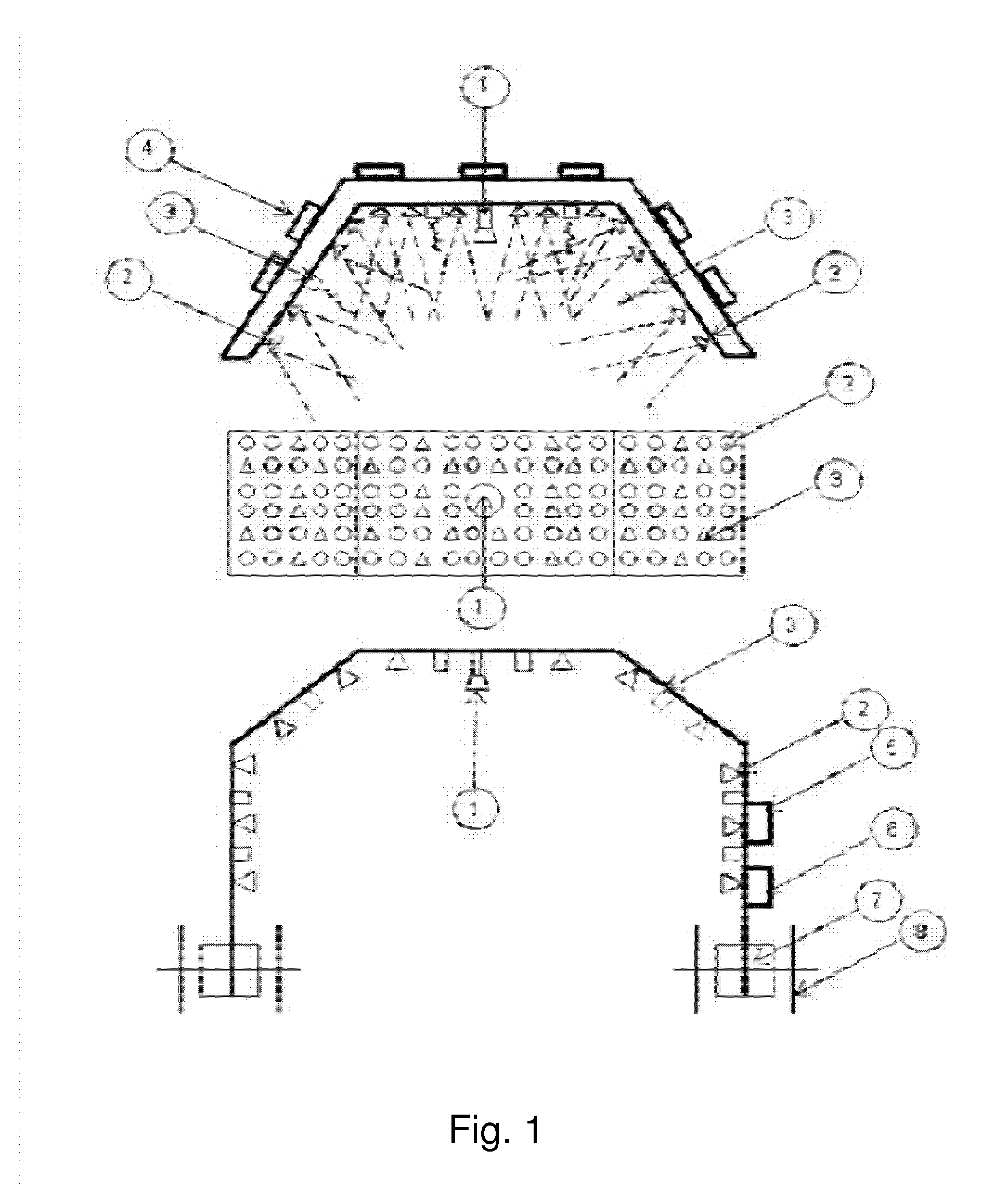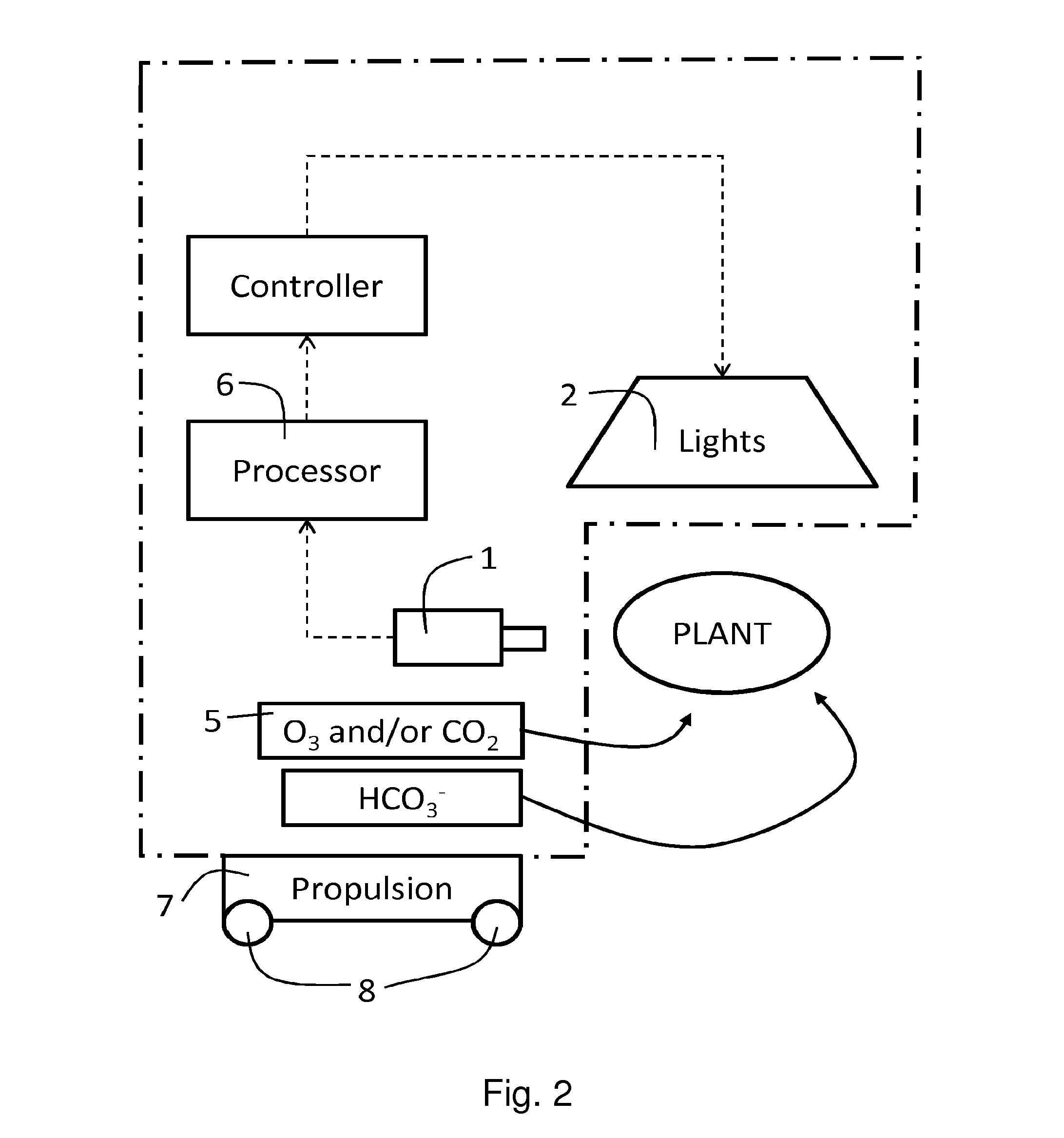Method and apparatus for improving growth and/or pathogen resistance of a plant using transient high-intensity illumination
a high-intensity illumination and plant technology, applied in the field of methods and apparatus for improving the growth and/or pathogen resistance of plants using transient high-intensity illumination, can solve the problems of reducing the nutritional, flavour and taste value of indoor cultivated plants for consumers, wasting energy, and not optimizing the growth of plants in conventional light systems and light programs. , to achieve the effect of improving pathogen resistance, reducing infection, and increasing disease resistan
- Summary
- Abstract
- Description
- Claims
- Application Information
AI Technical Summary
Benefits of technology
Problems solved by technology
Method used
Image
Examples
experiment 1
[0063]Plant Material: Arabidopsis thaliana transgenic lines with hybrid reporter gene construct ASCORBATE PEROXIDASE 1 and 2 (APX1 and APX2) promoter fused in frame with firefly LUCIFERASE (LUC) gene APX1:LUC and APX2:LUC (Karpinski et al., 1999). For experiments 5-week-old plants were used.
[0064]Light Treatments: Arabidopsis thaliana transgenic APX1:LUC and Col-0 rosettes were grown in ambient low-light laboratory conditions (LL, light generated by a mixture of fluorescence tubes L30W / 77-fluora and 30W41-827 lumilux, (OSRAM, Berlin, Germany), with intensity of 100±20 μmol photons m−2 s−1, short photoperiod (9 h),) and were partially exposed to excess light (EL, 2000 μmol photons m−2 s−1) supplied from light-emitting diodes panels (Photon System Inst. Brno, Czech Republic). Heat emission from the light source was insignificant.
[0065]Environmental conditions: temperature 22 / 18° C. (day / night, respectively), relative humidity 70-80% and.
Analysis of Plant Material:
Imaging of Transgene ...
experiment 2
[0074]Plant Material: Arabidopsis thaliana transgenic lines with hybrid reporter gene construct ASCORBATE PEROXIDASE 1 and 2 (APX1 and APX2) promoter fused in frame with firefly LUCIFERASE (LUC) gene APX1:LUC and APX2:LUC (Karpinski et al., 1999). For experiments 5-week-old plants were used.
[0075]Light Treatments: Arabidopsis thaliana transgenic APX1:LUC and Col-0 rosettes were grown in ambient low-light laboratory conditions (LL, light generated by a mixture of fluorescence tubes L30W / 77-fluora and 30W41-827 lumilux, (OSRAM, Berlin, Germany), with intensity of 200±20 μmol photons m−2 s−1, short photoperiod (9 h),) and were exposed 1.5 h to excess of white light (EL, 1500 μmol photons m−2 s−1), 4 h to excess of blue light (BL, 80 μmol of photons m−2 s−1 of 450±10 nm wavelength) and 4 h to excess of red light (RL, 120 μmol photons m−2 s−1 of 650±10 nm wavelength) supplied from light-emitting diodes panels (Photon System Inst. Brno, Czech Republic). The light conditions were calculate...
experiment 3
[0083]Plant Material: Arabidopsis thaliana (1.) Heynh., ecotype Col-0. For experiments 5-week-old plants were used.
[0084]Light Treatments: Arabidopsis thaliana rosettes were grown in ambient low-light laboratory conditions (LL, light generated by a mixture of fluorescence tubes L30W / 77-fluora and 30W41-827 lumilux, (OSRAM, Berlin, Germany), with intensity of 100±20 μmol photons m−2 s−1, short photoperiod (9 h),) and were exposed 1.5 h to excess of white light (EL, 1500 μmol photons m−2 s−1), 4 h to excess of blue light (BL, 80 μmol of photons m−2 s−1 of 450±10 nm wavelength) and 4 h to excess of red light (RL, 120 μmol photons m−2 s−1 of 650±10 nm wavelength) supplied from light-emitting diodes panels (Photon System Inst. Brno, Czech Republic). The light conditions were calculated and chosen for maintenance of similar energy. Heat emission from the light source was insignificant.
[0085]Environmental conditions: temperature 22 / 18° C. (day / night, respectively), relative humidity 70-80%...
PUM
 Login to View More
Login to View More Abstract
Description
Claims
Application Information
 Login to View More
Login to View More - R&D
- Intellectual Property
- Life Sciences
- Materials
- Tech Scout
- Unparalleled Data Quality
- Higher Quality Content
- 60% Fewer Hallucinations
Browse by: Latest US Patents, China's latest patents, Technical Efficacy Thesaurus, Application Domain, Technology Topic, Popular Technical Reports.
© 2025 PatSnap. All rights reserved.Legal|Privacy policy|Modern Slavery Act Transparency Statement|Sitemap|About US| Contact US: help@patsnap.com



